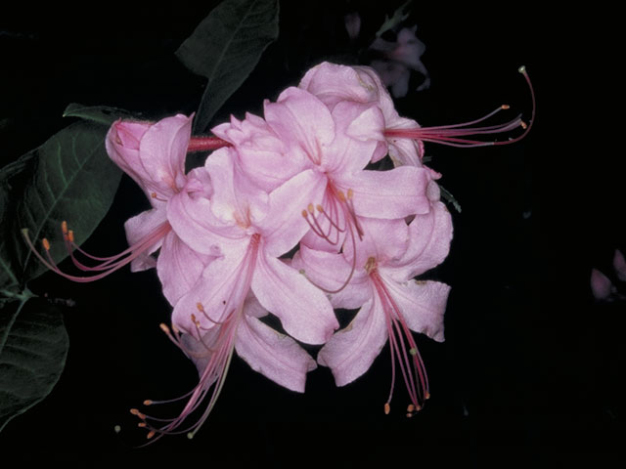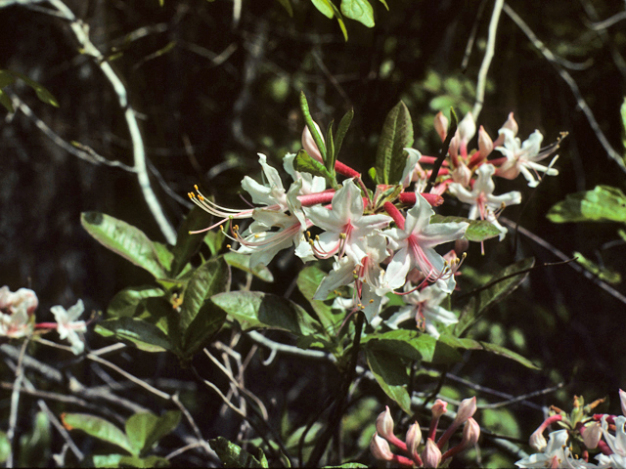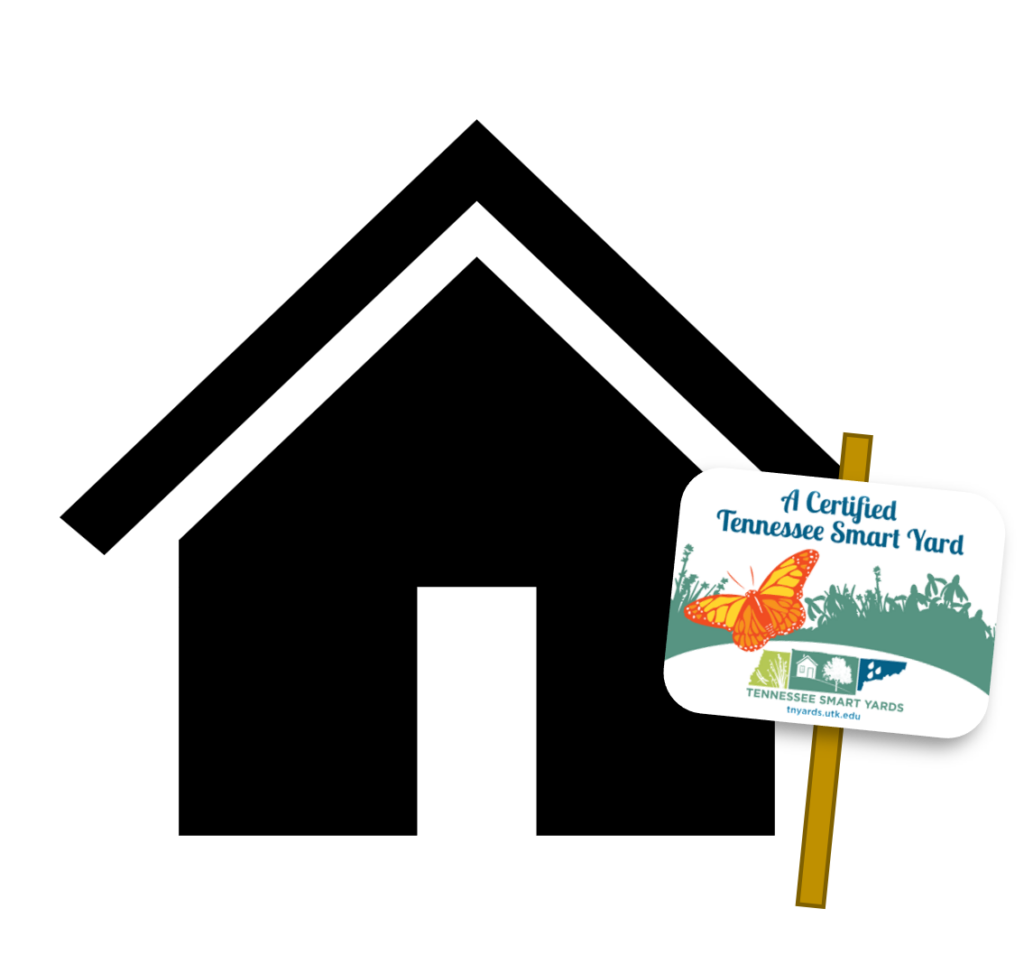
Common Name: Roseshell Azalea
Part to light shade; medium to moderately dry moisture level; organically rich soil is key but tolerates rocky or sandy loams, clay loams, and thin soils over rock; best in moderately acid to slightly acid pH but tolerates circumneutral to slightly alkaline pH.
4-8 feet height by 4-8 feet spread; blooms in May – June; rosy pink flowers; fruits are brown, dry, oblong capsules in August and persisting through late March.
Growth Rate: Slow
Maintenance: Frequent disease and insect problems. Good cultural practices help reduce damage. Use a yearly addition of organic mulch to retain moisture and reduce temperature fluctuations. Shallow roots should never be allowed to dry out. Avoid application of fertilizers which tend to create fertilizer burns. Rhododendrons are sensitive to high levels of fertilizer salts.
Propagation: Seed propagation code A. Moderately easy from seed and difficult by cuttings. Seeds need to be mixed loosely into a sphagnum moss and sprinkled lightly over a 2:1 perlite/peat mixture and germinated under a mist or in a plastic tent at 45-50 degrees F.
Native Region: Cumberland County only
Deciduous, globular shaped shrub with numerous, picturesque ascending branches. Quite durable and extremely winter hardy azalea. Fragrant, clove-scented flowers. All parts are poisonous to humans. Attracts hummingbirds and butterflies but limited use by songbirds.

